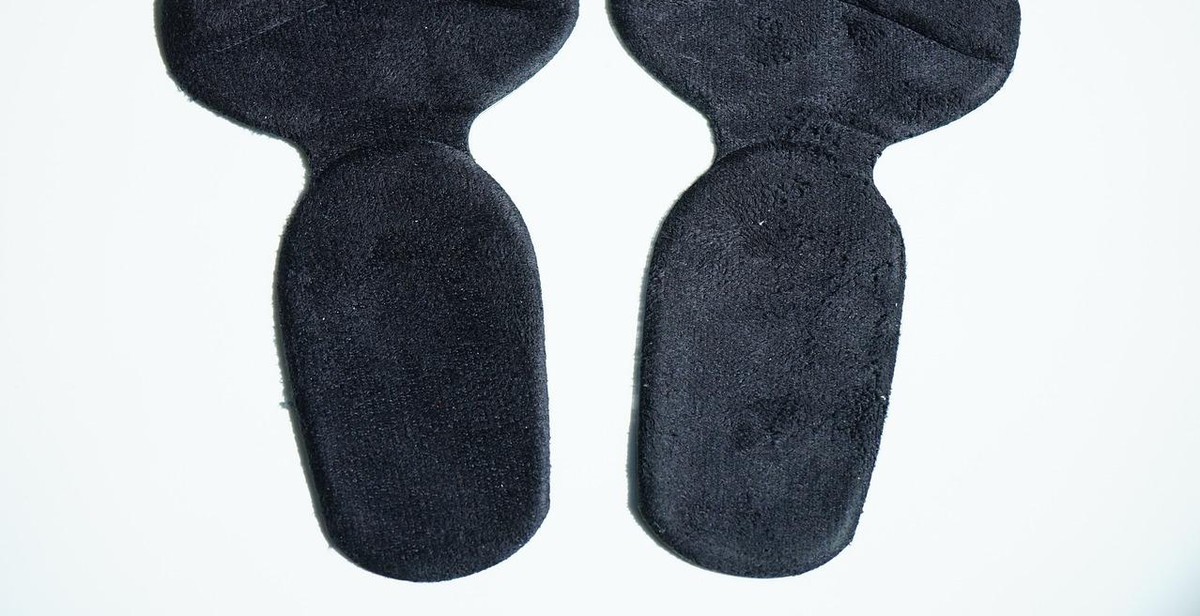How to Choose the Right Running Shoes: Factors to Consider for Foot Support
As a professional runner with over 10 years of experience, I understand the importance of choosing the right running shoes for foot support. Wearing the wrong shoes can lead to foot injuries, discomfort, and even impact your overall performance. With so many options available in the market, it can be overwhelming to choose the right pair. In this article, I will guide you through the factors to consider for foot support and help you make an informed decision.
Foot Type
Your foot type plays a crucial role in determining the type of running shoes you need. There are three types of feet – flat, neutral, and high arches. Knowing your foot type will help you choose the right shoes that provide adequate support and cushioning.
Arch Support
Arch support is an essential factor to consider when choosing running shoes. The arch of your foot needs proper support, especially if you have flat feet or high arches. The right running shoes with proper arch support can prevent injuries and provide a comfortable running experience.
Cushioning
Cushioning is another crucial factor to consider when choosing running shoes. The right amount of cushioning can absorb shock and reduce stress on your feet, knees, and ankles. However, too much cushioning can also lead to instability and discomfort.
Conclusion
Choosing the right running shoes can make a significant difference in your running experience. By considering your foot type, arch support, and cushioning, you can find the perfect pair that provides adequate support and comfort. In the next section, we will dive deeper into each factor and help you make an informed decision.
Importance of Choosing the Right Running Shoes
Running is an excellent form of exercise and a great way to stay fit, but it can also be hard on the body. This is why choosing the right running shoes is so important. Wearing the right shoes can help prevent injuries, increase comfort, and improve performance. Here’s why:
Prevents Injuries
Running can put a lot of stress on the feet, ankles, knees, and other parts of the body. Wearing the wrong shoes can make this stress even worse, leading to injuries like plantar fasciitis, shin splints, and stress fractures. The right running shoes, on the other hand, provide the support and cushioning needed to help prevent these injuries.
When choosing running shoes, it’s important to consider your foot type and gait. Some people have flat feet, while others have high arches. Some people overpronate, while others supinate. By choosing shoes that are designed for your specific foot type and gait, you can help prevent injuries and keep your body healthy.
Increases Comfort
Running in uncomfortable shoes can be a miserable experience. It can lead to blisters, hot spots, and other painful foot problems. The right running shoes, however, provide the comfort and support needed to keep your feet happy.
When trying on running shoes, it’s important to make sure they fit properly. They should be snug but not too tight, with enough room in the toe box for your toes to wiggle. You should also pay attention to the cushioning and support, making sure they feel comfortable and supportive.
Improves Performance
Finally, choosing the right running shoes can improve your performance. When your feet are properly supported and cushioned, you’ll be able to run faster, longer, and with less fatigue. This can help you reach your running goals and enjoy the sport even more.
When choosing running shoes, it’s important to consider the type of running you’ll be doing. Are you a long-distance runner or a sprinter? Do you run on trails or pavement? By choosing shoes that are designed for your specific type of running, you can improve your performance and get the most out of your workouts.
| Benefits of Choosing the Right Running Shoes |
|---|
| Prevents injuries |
| Increases comfort |
| Improves performance |
Overall, choosing the right running shoes is essential for anyone who wants to stay healthy, comfortable, and perform their best. By considering your foot type, gait, and the type of running you’ll be doing, you can find the perfect shoes for your needs.

Factors to Consider for Foot Support
When it comes to choosing the right running shoes, foot support is one of the most important factors to consider. Proper foot support can help prevent injuries and provide a comfortable running experience. Here are some factors to keep in mind:
Foot Arch Type
One of the first things to consider is your foot arch type. There are three main types of foot arches: high arches, normal arches, and flat feet. High arches require shoes with more cushioning to absorb shock and reduce the risk of injuries. Normal arches can generally wear most types of running shoes, but it’s still important to choose shoes with adequate support. Flat feet require shoes with more stability to help prevent overpronation.
Pronation Type
Pronation refers to how your foot rolls inward when you run. Overpronation, where the foot rolls inward too much, can lead to injuries. Underpronation, where the foot doesn’t roll inward enough, can also lead to injuries. It’s important to choose shoes that match your pronation type. Shoes with more stability are recommended for overpronation, while shoes with more flexibility are recommended for underpronation.
Cushioning
Cushioning is another important factor to consider. Shoes with more cushioning provide more shock absorption and can help prevent injuries. However, too much cushioning can also affect your gait and lead to injuries. It’s important to find a balance between cushioning and support that works for you.
Support
Finally, support is crucial for foot health. Shoes with good support can help prevent injuries and provide a more comfortable running experience. Look for shoes with a firm midsole and good arch support. It’s also important to choose shoes that fit well and provide enough room for your toes to move around.
| Foot Arch Type | Pronation Type | Cushioning | Support |
|---|---|---|---|
| High arches require shoes with more cushioning. | Overpronation requires shoes with more stability. | Shoes with more cushioning provide more shock absorption. | Good arch support is crucial for foot health. |
| Normal arches can generally wear most types of running shoes. | Underpronation requires shoes with more flexibility. | Too much cushioning can affect your gait and lead to injuries. | Shoes with a firm midsole provide good support. |
| Flat feet require shoes with more stability. | Choose shoes that fit well and provide enough room for your toes. |

Getting the Right Fit
Choosing the right running shoes is not just about finding the right size. It’s also about finding the right fit that will give you the support you need for your feet. Here are some tips to help you get the right fit:
Measure Your Feet
Measuring your feet is the first step in finding the right fit. Feet can change in size and shape over time, so it’s essential to measure them regularly. You can use a ruler or a measuring tape to measure the length and width of your feet. Make sure to measure both feet because one foot may be slightly larger than the other.
Once you have your measurements, use the shoe size chart to find your size. Keep in mind that different brands may have different size charts, so it’s best to check the size chart of the brand you want to buy.
Try Them On
Trying on the shoes is the best way to determine if they fit your feet correctly. Make sure to wear the socks you plan to wear when running and try the shoes on at the end of the day when your feet are at their largest.
When trying on the shoes, stand up and walk around to see how they feel. The shoes should feel snug but not tight. Make sure there is enough room in the toe box to wiggle your toes. Check if the heel is secure and does not slip out of the shoe. Try some running movements to see if the shoes provide enough support for your feet.
Consider Your Socks
When choosing running shoes, consider the type of socks you plan to wear. Thick socks may require you to buy shoes a half size bigger than your usual size. On the other hand, thin socks may require you to buy shoes a half size smaller than your usual size.
It’s also important to consider the material of your socks. Cotton socks may cause blisters and irritation, while synthetic socks can wick away moisture and prevent your feet from getting too sweaty.
| Tip: | Bring your current running shoes with you when trying on new shoes. This can give the salesperson an idea of what kind of shoes you need based on the wear and tear of your old shoes. |
|---|
Getting the right fit for your running shoes can make all the difference in your running experience. Take the time to measure your feet, try on the shoes, and consider your socks to find the perfect fit for your feet.

Conclusion
Choosing the right running shoes is crucial to prevent injuries and improve performance. When selecting running shoes, it is important to consider the factors that have an impact on foot support, such as cushioning, arch support, and shoe size.
Firstly, make sure to choose shoes that provide adequate cushioning to absorb the impact of each stride. Secondly, consider the arch support that the shoes offer, based on your foot type. If you have flat feet, you may require more support than someone with high arches. Lastly, make sure to choose shoes that fit properly and are the right size. Shoes that are too small or too big can cause discomfort and lead to injuries.
When shopping for running shoes, it is also important to consider the type of running you will be doing. Trail running shoes are designed for rough terrain, while road running shoes are made for smoother surfaces. Additionally, consider the level of pronation of your feet when selecting running shoes.
Ultimately, the right running shoes will provide the necessary foot support, prevent injuries, and enhance your running experience. By taking the time to consider all the factors outlined in this article, you can choose the perfect pair of running shoes for your needs.
| Factors to Consider for Foot Support |
|---|
| Cushioning |
| Arch Support |
| Shoe Size |
- Choose shoes that provide adequate cushioning
- Consider the arch support that the shoes offer
- Make sure to choose shoes that fit properly and are the right size
